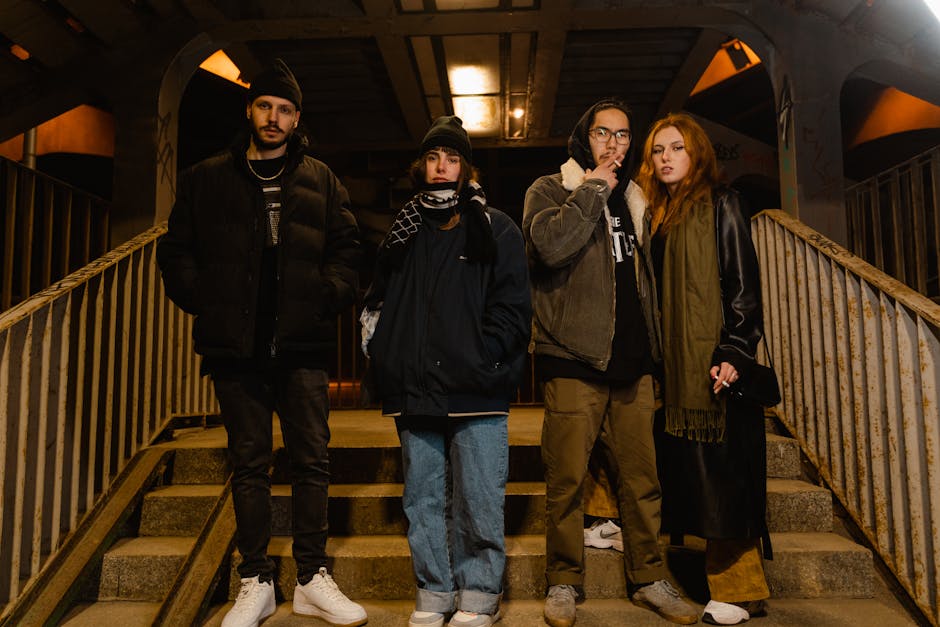So, like, here we are in 2025, right? And things with money, you know, they just keep on changing, it feels like. Used to be simpler, sometimes, didn’t it? Just cash, or a check, and you were good. But now, with all the digital stuff, and everyone sending money around on their phones, it gets kinda messy sometimes. You know, with Zelle and Venmo and all of those apps.
And, speaking of Zelle, which a lot of people totally use for quick payments, there’s this whole thing with Chase bank and social media that’s been making waves. It’s like, some payments just aren’t going through, or they’re getting stopped. Especially if they seem to have anything to do with social media platforms. People are finding this out, and it’s a bit of a headache.
It’s not totally clear-cut, which is part of the confusion, actually. But it definitely looks like Chase is putting a stop, or a block as some say, on certain Zelle payments. When it looks like these payments might be coming from or going through apps like Instagram, Facebook Marketplace, or other places where people connect. That’s what’s being talked about, anyway.
You might be trying to send money to a friend for something they sold you through a group chat. Or maybe you’re paying for a little item you found on a social platform’s selling section. And then, boom, your payment just, well, it hits a wall. It’s not really what you expect when you’re just trying to get things done, is it?
This whole situation, you could say it highlights a bigger thing. Which is how banks are trying to keep up with how we all use money now. And also, how they are trying to keep us safe, or so they say. Because there’s a lot of funny business out there, really. Scams and tricks, they’re everywhere you look online.
It’s actually kind of a big deal for a lot of regular people. They’re just trying to live their lives and manage their money. And then something like this happens, and it adds another layer of thinking, you know? To what should just be a simple transfer of funds.
What this generally means is you might need to find another way to send or receive money. If your transaction has any kind of scent of social media on it, it might get caught up. And that can be super inconvenient, obviously, for everyone involved in that money moving.
This isn’t just a Chase thing, though they’re certainly being talked about a lot for it. Banks, in general, are trying to figure out the best way to deal with all these digital payment options. They’re all trying to walk this very fine line. Between making it easy for you and also making sure you don’t lose your money to a bad actor.
What’s The Gist of The Chase Zelle Block?
Okay, so what’s truly going on? Basically, it’s considered to be Chase putting some filters or checks in place. For payments that they think might be connected to social media apps. Or, honestly, sometimes even just stuff that smells a bit suspicious. They want to make sure you’re not getting scammed, which is good, on the one hand.
But it’s not always super smooth or straightforward. People are reporting that if they mention social media in the payment memo, it might trigger something. Or if the account they’re sending money to has recently received a lot of payments from different people. All of which could look like some sort of scam.
So, for example, if you’re buying something small, say a hand-knitted scarf from someone on Instagram. And they tell you to send the Zelle payment to their email or phone number. You might type “scarf from Insta” in the memo. And then, oops, payment held up. That’s the sort of situation people are running into, generally.
It’s all about trying to stop fraud, or what they call “authorized push payment fraud.” That’s where you actually send the money yourself. But you’ve been tricked into doing it. Like, someone pretends to be your cousin. Or says they’re selling concert tickets, but they really aren’t.
Banks are getting a lot of pressure, too. From regulators and from customers. To do more to keep everyone safe from these kinds of tricks. So, Chase, with its Zelle payments, is really just trying to tighten things up. Especially when it comes to those kinds of payments that often get tied to social media scams.
You know, it’s a preventative measure, normally. They’re trying to stop the bad things from happening before they actually do happen. And in the world of 2025, with so much happening online, this kind of thing is becoming a more common practice for financial institutions.
Why is This Even Happening? Chase’s Reasons
So, why would a bank like Chase put these kinds of restrictions on Zelle payments? Well, primarily, it boils down to security, really. They are trying to protect their customers from scams, pure and simple. There are so many stories out there about people losing money. Because they sent it to someone they met on social media.
Think about it this way: social media platforms, they’re fantastic for connecting. For buying and selling things, too, on the side. But they also, sadly, provide a kind of breeding ground for bad actors. For people who want to trick others out of their money. And Zelle, because it’s so quick, it’s often used by these scammers.
Once you send money through Zelle, it’s usually gone. It’s really hard to get it back, if not impossible, most times. Unlike credit card payments, where you have more protections. So, Chase, and other banks using Zelle, they have a big reason to be extra careful. Especially with payment types that seem to pop up a lot in fraud reports.
It’s a balance act, totally. They want to make payments easy, obviously. But they also don’t want to be blamed for everyone losing their cash. Because someone pretending to be a Nigerian prince convinced them to send money for a fake inheritance, you know? It’s a tough situation for them.
The rules around digital payments, they are always getting more complicated. And banks are under a microscope to do more. To prevent fraud, and to make sure people’s money is safe. So, these blocks, they’re a direct response to that. It’s their way of trying to cut down on some of the risks.
It’s probably not just a single thing. It’s a mix of lots of data. About where scams are happening, what words are used, how quickly money moves. And then they just put in some rules. Which, unfortunately, can sometimes catch regular, innocent transactions too. It’s the cost of trying to secure things, I guess.
How Does This Affect Your Everyday Payments?
Well, if you’re someone who often uses Zelle to pay for things found on social media, or to get paid that way, then this could definitely be a bit of a problem. It means you might need to change your habits, which is never fun. Especially when you’re used to a certain convenience.
You might try to send a payment, and it just doesn’t go through. Or it gets delayed, and you have to call Chase. And then you have to explain everything, which takes time. And that’s time you probably don’t have, or want to spend, usually. It adds friction to things that should be smooth.
For small businesses or independent sellers who rely on social media to reach customers, this is also a bit of a challenge. They might lose sales, or their customers might get frustrated. Because the usual payment method just isn’t working for some reason. It’s an extra hurdle for them, really.
So, you’ll generally have to be more aware of how you’re sending or receiving money. And from whom, particularly. It encourages people to use Zelle only with people they totally know and trust. Which, to be fair, is what Zelle was really made for in the first place, you could say. Family, friends, people you know.
It just kind of slows things down sometimes. And makes you think more about things. Which, again, might be the point. To make you pause before sending money, just in case. But it can also feel like a bit of a handcuff when you’re trying to do something legitimate and quick.
You might need to start using other payment services. Or even just go back to cash or checks for certain things. If the Zelle-social media link is getting too many blocks. It’s definitely making people think about their payment options a bit more, which is interesting, I suppose.
Navigating the New Zelle Rules (Or Blocks) in 2025
So, what can you actually do about all of this? If you’re using Chase and Zelle in 2025, and you want to avoid these blockages, there are some ways you can try and move forward. It’s not totally foolproof, but these are general good ideas. It really makes sense to be cautious with your money, you know.
First off, and this is like, super important, only use Zelle with people you really, truly know. Family, friends, close colleagues, that sort of thing. If you’re sending money to someone you’ve only “met” online, especially on social media, then you should probably think twice. Or three times, actually.
Try to avoid putting any specific social media platform names in the Zelle payment memo. Like, don’t write “Facebook Marketplace chair” or “Insta shoes.” Keep the memo simple and clear, just enough to remind you what it’s for. This might help payments go through without raising any flags.
If you are buying or selling something with someone you don’t know personally, think about using payment methods that offer buyer protection. Things like PayPal Goods and Services, or even a credit card. Because then, if something goes wrong, you usually have a way to dispute the charge. Which is a really good thing to have.
Always, always confirm the recipient’s information very carefully. Their phone number or email linked to Zelle. Double-check it. Even triple-check it. Scammers are really good at subtle changes, like one number different, and your money goes to them instead of the right person.
If a payment gets blocked, and you think it’s a legitimate transaction, you can always call Chase customer service. They might be able to help you. Though it can take some time and effort to sort out, normally. And sometimes they just can’t undo the block. So prevention is often the best medicine, as they say.
It’s also considered a good idea to stay up-to-date. With any new warnings or changes from Chase or Zelle themselves. Because these things are always moving, always changing. What works one day might not work the next. So, keep an eye on official announcements, that’s generally a wise move.
This whole situation is kind of a reflection of where digital money is going, really. More security measures, sometimes more hoops to jump through. But it’s all supposed to keep us a bit safer. Even if it does make things a little bit more complicated sometimes, in 2025 and beyond.
FAQ About Chase Zelle Social Media Payments Block
Q1: What exactly is this Chase Zelle social media payments block everyone is talking about?
It seems to be Chase putting some automated filters in place. These filters are designed to stop Zelle payments that look like they might be linked to social media platforms. Or might be part of some kind of scam. It’s about trying to protect folks from losing their money.
Q2: Will all my Zelle payments connected to social media get blocked by Chase?
Not necessarily every single one, but there’s a higher chance now. Payments might get flagged if you mention social media in the memo. Or if the pattern of the transaction seems a bit off, like a common scam type. It’s a kind of risk assessment thing by the bank.
Q3: Why is Chase doing this with Zelle in 2025?
Chase, like other banks, is really trying to fight against online fraud. Especially those where people are tricked into sending money through apps like Zelle. Social media is, sadly, a place where many of these scams start. So, they’re trying to cut down on that risk for their customers.
Q4: What should I do if my Chase Zelle payment gets blocked because of social media?
If a payment gets stopped, you should first contact the person you’re trying to pay. And then, consider using a different payment method. Or you can call Chase’s customer service to ask about it. Just be ready to explain your situation thoroughly.
Q5: Is there a way to make sure my Zelle payments with Chase don’t get blocked?
The best way is to only use Zelle for people you know very well, not strangers from social media. Avoid putting social media names in your payment memos. And for online purchases with unfamiliar people, use other payment services that offer better buyer protection.















